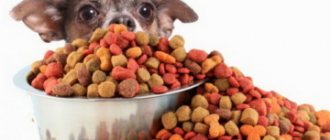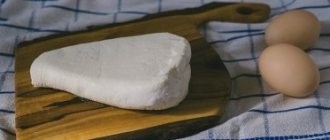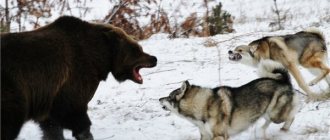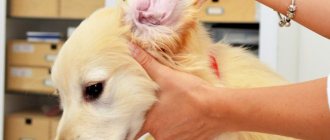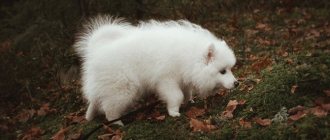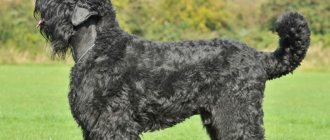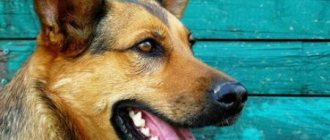Having a pug in the house is happiness for many. But there are often times when a pet behaves badly, chews and dirty things. However, every conscientious owner tries to do everything to make his four-legged friend feel good and enjoy life. To do this, you need to know how to feed your pug correctly and what, what foods can be used and which are best avoided, the peculiarities of feeding pregnant and neutered dogs, and so on. All this will be discussed further below.
How much and how often to feed
The Pug is one of the most popular dog breeds that is not designed for hunting or anything like that. Pugs are decorative pets, quite compact and proportional. Their weight can reach 8 kg at the age of one year. If we talk about the disadvantages of this breed, the main one is the tendency to obesity. To prevent this, you need to remember the correct diet.
The joy of a morning walk
As a rule, all pugs are different, but there are a number of general rules that should be considered when feeding:
- dogs of this breed eat everything, which, of course, should not be allowed. The whole problem is that their gastrointestinal tract is weak; when food that is not suitable for the dog enters the body, it reacts immediately;
- To avoid obesity, it is recommended to establish clear portion sizes, the number of meals per day and feeding times. It is recommended to do this within a month after the puppy arrives in the family. There is no need to change the serving size, it should be the same every day;
- Just like food, water is important for pugs. We must not forget about this. However, the owner must remember that it is best to give the pet filtered water, and not from the tap, because it contains many microbes and bacteria harmful to the dog’s body;
- the temperature of the food should be average - not cold or hot, but just warm, balance is important;
- If your dog's diet contains meat, it should not be salted. It should be raw, since in this form the pug’s stomach digests homemade food better. You can only salt vegetables, but only a little. Sometimes fish is allowed.
For your information! The majority of a dog’s diet (about 70%) should be meat, because by their nature pugs are predators.
Waiting for food
Rules for eating natural food
What to feed your pug? If the diet consists of natural food, then the following ingredients are used.
Meat. The pug's diet should consist of 2/3 fish and meat ingredients . Regarding meat products, the following lean types of meat are suitable for dogs of this breed:
- Mutton.
- Beef.
- Rabbit meat.
- Poultry meat.
If there is no allergy to poultry meat, such pets can be fed raw chicken bones . It is not recommended to feed your pug pork, as this is a very difficult product for his liver and stomach.
In addition, when feeding pork, infection with helminths can occur. Another important point is that the dog’s meat must be given raw and should not be salted.
Fish. Pug food must contain fish ingredients. It is best to feed them marine species of lean fish . To do this, the fish is boiled and fed to animals twice a week. This product contains a lot of calcium and phosphorus, which are important for their health.
Vegetables and cereals
Vitamins and fiber are essential components for the effective functioning of a dog's stomach. The animal's diet must include vegetables and greens. Garlic, cabbage, carrots, and eggplant are great for pugs.
Vegetables can be either raw or stewed , but they need to be lightly salted. It is advisable to give fresh vegetables not only because they contain a large amount of vitamins. If you cut them into small cubes or grate them, this will remove plaque from your pet’s teeth.
Your dog's diet should include foods containing fats and proteins . Cereals should be added in small quantities, after finding out if she is allergic to this ingredient. The following grains are good for pugs:
- cereals;
- buckwheat;
- rice.
Milk. Pug dogs have a sensitive digestive system. They should always have both a bowl of water and a bowl of milk to help relieve pets from heartburn, which often plagues them.
In addition to milk, you can include in your diet such fermented milk products as yogurt, lightly salted cheese, unsweetened yogurt, and low-fat cottage cheese.
Eggs. Pugs should be given quail and chicken eggs , which are a source of natural protein. The pet's diet should consist of boiled quail eggs and chicken egg yolks.
Features of dry food for pugs
Dry industrial feeds are very convenient to use, which is why they are very popular. But you need to choose them correctly, taking into account all the characteristics of your pet.
The best dry food for a pug is Royal Canin . Its granules have a special shape that allows a flat-faced dog to easily grasp the food. In addition, thanks to the large granules, the pug's teeth are well cleaned.
Another advantage of Royal Canin dry food is that it helps keep your pet's skin in good condition and does not cause allergies. And also the composition of the food was developed in such a way that the dog does not gain excess weight .
Prohibited Products
What should you not feed your pug? Since this breed of dog has sensitive digestion, there are a number of foods that they should not eat. These include the following products:
- Semi-finished products.
- Pickles and smoked meats.
- Bread and pastries.
- Sugar and sugar-containing products.
- Semolina porridge.
- Pasta.
These listed products often cause digestive disorders, subsequently leading to chronic diseases.
We use the trial method
Despite the many advantages of natural food, you will not be able to independently determine the quantitative set of useful microelements and vitamins. You won’t even know what you can replace them with. Consequently, a diet made from natural products will always be only approximately balanced. An excellent way out of the situation is ready-made dry food, where specialists have already calculated everything.
The amount of proteins, fats, carbohydrates and other components is indicated on the packaging, recommendations are given on how to feed the pug correctly, that is, how much food should be given at one time depending on its weight. All you have to do is follow the proposed scheme. However, not all so simple.
The fact is that the pug is a breed prone to allergies, obesity, and its digestive system is not very stable. Therefore, in practice, until you find the food that is suitable for your pet, you may have to try more than one brand. We advise you to choose ready-made meals of at least premium class.
For example, the well-known Royal Canin can attract many pug owners with its relatively low cost. It is made on a plant basis with the addition of chicken by-products. But whether it is suitable for your pug is a moot point. To determine this, we recommend buying some food and seeing how the dog and his body react to such food. This advice applies to any brand and manufacturer. This food comes in the following types:
- Brit (hypoallergenic, with lamb and rice);
- Organix (for sensitive dogs);
- Acana (for puppies, lactating and pregnant bitches);
- Bosh (for older dogs);
- Orijen (due to its high protein content, suitable for very active pugs and puppy dogs);
- Wolfsblut (does not cause allergies);
- Go Natural Holistic (grain-free, suitable for dogs of all ages);
- Eukanuba Adult (high quality protein sources and low fiber content);
- First Mate (grain-free fish and potato based puppy diet);
- Arden Grange (high meat content).
For this poro, the American food Canidae All Life Stages, which does not contain too much protein, may be suitable. Or Hill's Science Plan, which is produced in the Netherlands. Its advantage is the reduced amount of proteins, and its convenience is the small size of the granules.
The assortment is quite wide, it remains to add that it is not recommended to give wet food. A special canned meat mixture mixed with crushed biscuits is recommended to be given as a treat. These products contain the required amount of nutrients and minerals.
Diet for 1 month
At week 4, the daily volume is 3 teaspoons of dry mixture per 1 pug puppy. Feeding intervals are maintained, the total amount also reaches up to 8 times. Gradually, one feeding with formula is completely replaced with meat.
The pug is a breed prone to allergies, so the introduction of any new products should begin with small portions and with mandatory monitoring of the reaction.
You can often find a recommendation to give soaked dry food as the first complementary food. However, puppies most often are not interested in it, since they get enough nutrients from bitches’ milk. Unlike dry food, meat almost always arouses keen interest.
Also during this period you can introduce homemade cottage cheese .
For this purpose, 3.2% milk is taken. Kefir has the same fat content – 3.2%. Half a liter of milk is poured into the pan, then you need to heat it until hot and add kefir (also half a liter).
Reduce the heat to low and watch when curds begin to form on the surface, and yellow-greenish whey underneath.
Turn off the heat and let stand for a while. Homemade cottage cheese is ready!
When the cottage cheese has cooled, give it to the puppies. The dogs happily drink the remaining whey.
The proportions milk/kefir are approximately 1/1. You can use a little more milk than kefir.
After 2-3 days from the beginning of introducing the product into the diet, in the absence of negative reactions, one feeding with the mixture is completely replaced with cottage cheese.
Natural food or dry food
There is an opinion that natural food is the most suitable and beneficial for the development of a pug’s body, because it contains all the necessary vitamins and other microelements. However, such nutrition may have some disadvantages, the main of which are the inability to constantly select products of exceptionally high quality so as not to harm the pet, and daily monitoring of the freshness of the products used. The owner must monitor all this himself, which often requires considerable effort on his part.
What to feed Shar Peis at home: which food is better
Pets are recommended to eat:
- milk;
- boneless fish fillet;
- lean meat;
- dairy products;
- greenery;
- vegetables;
- fruits.
When preparing your diet, you should adhere to the following recommendations:
- as stated earlier, about 70% of the diet is meat. It will be useful to use rabbit, chicken (most importantly, lean) or lamb;
- 20-30% - vegetables, cereals, fruits. Cucumbers, sometimes peppers, cabbage and beets are allowed;
- no more than 2 times every two weeks it is necessary to reduce the pet’s diet to approximately 40% (perform a so-called fasting day);
- You cannot feed your dog both meat and dairy products at the same time, as there will be problems with digestion of food. At the same time, the likelihood of problems with the gastrointestinal tract increases sharply;
- heat treatment is required before feeding the pug fish or meat;
- It is not recommended to mix dry food with natural food, because the digestion of these components occurs differently.
Note! The most optimal type of food is, of course, dry food. The main advantages include a high content of microelements, vitamins, and a hypoallergenic composition that matches the physique and age of the dog. The owner does not have to prepare new portions of food every day, because he can simply pour the food into a bowl and that’s it.
But, despite its simplicity, you need to carefully choose food, or better yet, talk to the breeder and be sure to consult a veterinarian. Holistic, premium - these are the foods that are more suitable for pugs, as they contain a lot of vitamins. The only negative is the high price.
Food or natural food
Rules for feeding a pug with dry food:
- do not exceed the norm;
- do not combine with other feeds;
- do not mix with natural food;
- do not give to puppies;
- do not suddenly change the brand of food (this should be done gradually);
- do not use boiling water to soften;
- Do not combine premium food with additional additives.
Important! The water should be warm so as not to destroy the vitamins.
When complementary feeding, you can use dried fruits or regular fruits, but only if the pet does not refuse them. The main thing is not to combine them with dry food.
Feeding dry food
Industrial feeds are offered by manufacturers in a huge range. The main problem for the owner will be choosing the one that will satisfy the needs of the pet.
Using ready-made food makes life much easier, since the manufacturer indicates recommended feeding portions.
Pugs' stomachs handle solid foods best, so feeding them dry kibble is a great option. Please note that this breed should not use a mixed type of food: ready-made food in the morning, natural food in the evening. Such experiments will lead to gastrointestinal upset of the animal.
In addition to dry food, wet canned ready-made food can be introduced into the diet. This product can be used as independent feeding or added to natural food. For example, mix with cereals.
Soaking dry granules is allowed, but you should not do this with boiling water, because most of the vitamins and microelements will be destroyed. You can do this with milk or kefir, but you should not leave such a portion of food for re-feeding. You'll have to throw away anything your pug doesn't finish eating.
Photo: pixabay.com
Calculating the norm
To calculate the approximate amount of natural products to feed a pug over a year old, you need to multiply a factor of 0.04 by the dog’s weight. As a result, you will get the required daily requirement. For example, a pug weighing seven kilograms will need 280 grams of food for one day. Which ones exactly, see the table:
In the daily diet proposed for feeding a pug, you should alternate meat with offal. You can give raw or boiled liver, heart, tripe, chicken stomachs. The lung is consumed only in boiled form. An egg yolk once a week can completely replace a quail egg. It will be useful to add garlic to cooked dishes, but not more than one clove per week. To replenish energy levels with carbohydrates, include boiled potatoes in your pug's diet. But be aware that excess starch causes diabetes.
Recommended and prohibited products
What to feed a kitten for 2 months: how many times a day and what food
It is important to remember which foods are off-limits for pugs. Here is a small list of foods that you should not feed your pug:
- various kinds of seasonings;
- mushrooms;
- raw eggs;
- potato;
- pasta;
- mayonnaise, cream;
- pickles;
- corn;
- semolina;
- raisin;
- grape;
- bread;
- oranges;
- peas;
- sugar;
- sausages, semi-finished products;
- smoked meats;
- chocolate;
- liver.
Note! If the owner ignores the rules, then in the future his pet will face a number of problems: obesity, poor quality of coat and teeth, and nerve-related disorders.
The list of permitted products includes the following:
- vegetables;
- boiled yolk;
- lean meat;
- fruits;
- cereals;
- veal bones;
- sea fish;
- greenery;
- beef by-products.
Can pugs have milk? Yes, of course, in the early stages it is even necessary.
By introducing the above products in moderation into the pet’s diet, the owner will ensure that the dog’s body receives all the necessary elements.
If your dog wants an extra piece, don’t fall for his pleas.
What to feed an adult pug
Ready-made food should be premium class or higher; preference is given to holistic food.
We must not forget that the dog must be provided with access to clean water, which must be changed twice a day.
Natural food should be warm. The meat is cut into small pieces, convenient for consumption. Vegetables and fruits are given both raw and stewed. Many pugs refuse to eat them, so training for such foods begins very early. For example, Tasha doesn’t really agree, but she chews the zucchini and carrots very carefully!
It is advisable to choose the type of food once and for all, since transitions from one type to another can have a detrimental effect on the animal’s digestion.
An adult dog is fed twice a day. For example, at 7 am and at 22 pm. It is acceptable to give an afternoon snack, but you should not get carried away with all sorts of goodies.
Natural food
You can create the right menu yourself by first familiarizing yourself with the list of foods allowed for dogs.
Required for admission are:
- lean meats;
- sea fish;
- skim cheese;
- offal: liver, heart, kidneys, lung, liver;
- dishes with vegetables, seasoned with vegetable oil.
This is interesting: “>What types of cabbage can be given to dogs
Expert opinion
Anna Abramenko
An avid dog lover. Experience in veterinary medicine since 2009.
Ask a Question
It is prohibited to mix meat with other foods. It should be cut into large pieces.
Among the cereals that are beneficial for dogs are rice and buckwheat.
Nutrition depending on age
The number of food servings and their size directly depend on age. Properly selected nutrition will help ensure the full development of all organs and the body as a whole. It is especially necessary to pay attention to this when the pet is still very small. Therefore, it is important to know what to feed your pug puppy and how to do it correctly.
Nutrition from 1 to 3 months
Food for kittens: which is better, rating of dry and liquid options
Usually this period of time is the most important, since all systems of the puppy’s body are actively developing and require large amounts of vitamins and microelements. Excessively rich or heavy food is not suitable for feeding; it is better to replace it with cereals (buckwheat, rice), kefir, cottage cheese or milk, and vegetables (necessarily boiled).
Important! It is allowed to add honey to food (in small quantities).
At lunchtime, it is best to give your pet hearty meat, which will help him stay active and energetic. Puppies need to be fed more often than adult dogs, that is, about six times a day (Royal Canin pug food is great for this). The main thing in feeding is to find the optimal diet. Don’t delay in deciding how much to feed your pug puppy.
Approximate diet for a three month old puppy:
- beef (veal is allowed) raw and finely chopped;
- dilute cottage cheese with milk (kefir);
- cottage cheese and kefir (do not dilute);
- rice, rolled oatmeal;
- milk porridge;
- raw meat.
Note! When feeding, it is important to carefully study what Pugs eat and provide food at the same time each day. You cannot leave them without food for more than 8 hours (night break).
Food bowls
Nutrition from 3 to 7 months
The second important period in the life of every dog is the time of active growth. It is important to pay attention to foods that contain large amounts of calcium, which is needed for strong bones. The number of meals is reduced to three, milk and meat are still a priority.
At the beginning of the day, it is necessary to feed dairy products such as cottage cheese, milk or kefir. Towards the evening, it is preferable to give fish or meat (lean, for example, rabbit, poultry, hare, although dogs will not refuse lamb). Pork is not allowed. You can feed puppies with broken bird necks and wings.
Important! To prevent various diseases, it is periodically recommended to add a garlic clove to food.
Nutrition from 7 months to a year
At this age, the number of meals is usually reduced to 2, because this will be enough for the body. In the morning, you should feed your dog healthy foods, but not meat. In the evening, on the contrary, meat is an obligatory element of feeding.
What to feed a pug puppy
It's no secret that a baby's diet and menu are different from those of an adult dog. Let's figure out what to feed a little pug.
Keep the type of food that the baby received in the nursery. Transfer to another type should be done only after three weeks.
From 1 month
The puppy begins to develop very actively, so it needs more satisfying and nutritious food. During this period, you can already give him low-fat kefir, cottage cheese, and boiled vegetables. If ready-made food is used, the puppy is given soft, wet kibbles intended for babies his age.
Puppies are fed 6 times a day. The serving size is calculated based on the weight of the pet. It is believed that the daily requirement is 5-7% of the dog’s weight. If the puppy weighs 2 kg, the consumption rate will be 140 g. This figure is divided by the number of feedings per day, resulting in a portion size per feeding.
This is how the baby receives complementary foods for the first time, look!
From 1 to 6 months
As the pug gets older, the number of feedings per day decreases to three, and with them the serving size. By six months, the serving size is calculated using the formula: 4% of the animal’s weight.
From 6 months to a year
The dog's diet includes all the products that an adult dog needs. By this time, the dog is transferred to two meals a day.
Compliance with the diet is especially important for the breed. If the dog refuses food, it should be put in a cool place. There is no need to increase the portion at the next feeding.
Puppy feeding schedule
The type of diet must be maintained at the same level for the first two weeks after purchasing a pug puppy, so you need to find out from the kennel or breeder what food was used. The daily food intake for puppies under one year of age is divided into several feedings:
- up to two months - food is given six times a day;
- from two to four months - food is given four times a day;
- from four months to six months - food is given three times a day;
- from six months to ten months - food is given twice a day.
Starting from the age of one year, it is recommended to feed your pet twice a day, but if necessary, it is possible to transfer the pug to one meal a day. The first complementary foods are introduced to the puppy starting at the age of one or one and a half months . For this purpose, you can use low-fat kefir or yogurt, as well as cottage cheese.
Then the diet is gradually supplemented with lightly stewed and salted vegetables, well-cooked rice or buckwheat porridge. If your pet is actively growing and gaining weight well, then the diet is optimal. If necessary, vitamin and mineral supplements are added to food.
Starting from about three months of age, the main emphasis in the diet should be on meat products and low-fat boiled sea fish without bones. If the owner does not have the opportunity to feed the puppy natural food, then it is necessary to select industrially produced dry or wet food that is optimal in composition and age-appropriate. It is important to remember that the transition from one type of nutrition to another must be smooth and gradual.
This is interesting! Biscuit crumbs are an ideal source of carbohydrates for your pug puppy. Such crumbs should be mixed into minced meat or fish and fed to puppies aged two to five months, which promotes the development of chewing muscles.
Return to content
Dry food for a pug with allergies
Allergies in a pug can manifest themselves in very different ways, but most often the first signs of the disease are:
- skin itching, in which the pet itches quite often and very intensely, scratching the skin until it becomes red or damaged;
- the appearance of dandruff or severe dryness on the skin;
- focal hair loss, which causes the formation of bald spots;
- the appearance of an unpleasant and slightly sweetish odor from the dog’s coat and skin;
- wetness in the dewlap area, armpits and chest area;
- ear problems;
- excessive lacrimation from the eyes;
- unpleasant odor from the mouth.
The most common cause of allergies are ready-made dry diets, which include the following components:
- cereals, especially wheat, rice and corn;
- vegetable soy protein;
- poultry meat;
- tropical fruits;
- eggs;
- any artificial additives, flavors, preservatives and flavor enhancers.
Specialized hypoallergenic dry diets have sufficient calorie content and high nutritional value, but do not contain components that can provoke allergic reactions of varying severity.
The rating of such food directly depends on the advertising policy and popularity of the manufacturer, but reviews from dog breeders and recommendations from veterinarians are also important.
This is interesting! Among the most popular and very well-proven hypoallergenic foods are special lines produced by Royal Canin, Brit and Acana, as well as the Orijen and Bosch brands.
Return to content
Industrial feed
If it is not entirely clear which food is best for a pug, the following information is about exactly that.
The first food you should look into is Royal Canin. It is perfect for pregnant women and two-month-old puppies. The manufacturer also produces products for elderly pets, those suffering from obesity, and to maintain healthy fur. On the downside, the composition for grains, meat and other by-products is not indicated; on the upside, Royal Canin is quickly absorbed.
Other brands:
- First Mate is a high quality food for pugs. It is produced in Canada, Colombia and even Australia. The composition contains a large number of minerals, amino acids, meat, fruits, vegetables and other vitamins. The quality of the product is monitored very strictly;
- Canidae is made in America and is holistic. Rich composition - fruits, peas, meat, various vegetables, potatoes;
- Acana is found on the market in the form of holistic and super-premium. Many Americans and Europeans consider the brand to be the best. The manufacturer produces only dry food. Advantages - there are no flavorings, by-products or other components, meat makes up the majority of the feed (60% and above). The composition contains berries, oats, vegetables (potatoes and others), apples, fatty acids, amino acids.
All dogs eat dry granules with pleasure
Say a word about vitamins
During the period of mating, pregnancy, childbirth and for a lactating bitch, the owner must increase the amount of vitamins she consumes.
Milk, liver, fish oil, carrots, tomatoes and greens are foods rich in vitamin A, which is necessary for offspring growing in the belly. For the development of muscles, good skin and coat, you need vitamin B, which is found in brewer's yeast, cottage cheese, kefir, and potatoes. Vitamin C supports immunity during this stressful period for a female pug. It enters the body with vegetables and fruits.
Most vitamin D, which strengthens bones and tendons, is found in fish oil and liver. And salads made from carrots and beets with herbs will compensate for the lack of vitamin E, which is responsible for the body’s reproduction and the smooth course of pregnancy.
The above vitamins are important not only for the puppy bitch, but also for pugs of any age and condition. These products contain: calcium, phosphorus, iron, magnesium, sodium, chlorine, iodine and other elements. They are needed for the coordinated functioning of all the dog’s organs, which directly affects its health.
Nutrition for an adult dog
When a pug has reached the age of eight months, the owner can switch it to food intended for adult dogs. It will be necessary to adjust the diet, referring to the animal’s tastes, its weight, concomitant diseases, activity, etc. You can feed him both natural food and dry food (you just don’t need to combine it).
Diet for older dogs
When a pug turns six or seven years old, we can definitely say that he has become an old man (2/3 of his entire life). At this age, a decrease in activity and a slowdown in metabolism occur, so it is recommended to exclude large amounts of calories, proteins and fats, the excess of which negatively affects the kidneys.
Instead of meat, preference is given to fish (necessarily low-fat) or milk with cottage cheese. To relieve constipation, the pug is given dietary fiber.
Important! When feeding your dog exclusively dry food, you should pay attention to special food containing o.
First food for a small dog
Pug litters are rarely large, with an average of 2 to 5 puppies born. This amount is optimal for natural feeding. However, in some circumstances, for example when the bitch has little milk and the puppies are not gaining weight well, it is recommended to introduce early complementary foods.
An objective signal for the decision to introduce complementary foods is a log of the puppies' weight gain. If there is no weight gain within 3 days, the puppies behave restlessly, squeak and pick at their nipples - it is necessary to introduce additional nutrition. Before 3 weeks of age, they cannot digest meat or processed food.
How to do it right?
Cow's milk, due to its high lactose content, is also poorly digestible. The best option would be to use a specialized milk formula. It is diluted in the proportions specified in the instructions, usually 30 ml of water per 1 measuring spoon, and heated to 36 degrees.
Milk is given through special bottles, or poured into a syringe with the needle removed. If necessary, such a substitute can be given from the first day.
Is it possible to give only this?
Ready-made complete feeds already take into account all the characteristics of the breed and select the ideal balance of proteins, fats and carbohydrates. Feeding only dry food is often practiced by owners. And by following the portion sizes recommended by the manufacturer, you can avoid significant health problems such as obesity.
Due to the brachiocephalic structure of the skull, when feeding wet ready-made rations, most of the muzzle ends up in the food. However, you should not completely exclude canned food from the menu. This problem can be solved by mixing dry and wet food.
A separate nutrition option is to use only natural products. The advantage is that the exact composition of the contents of the bowl is known, and if an allergy occurs, it is easier to exclude a certain component.
The downside is the fact that if the balance of food components is not maintained, your pug will gain weight very quickly. Also, in the case of such feeding, it is necessary to regularly donate blood to check the ratio of calcium and phosphorus in the body.
Leading food manufacturers have special breed lines that take into account the characteristics and needs of pugs.
Regime after 6 and up to a year
From six months, puppies no longer need as high-calorie food as before. Most manufacturers of ready-made complete food produce special lines specifically for this age. The number of feedings per day should be at least 3 times a day. The daily portion is not given at once, but is divided into 3 parts.
Pugs, having a good appetite, cannot stop in time, so they often overeat. It is recommended to maintain the volumes specified by the food manufacturer on the packaging, in proportion to the weight and age of the puppy.
How to Avoid Obesity in Pugs
To avoid obesity in pugs, you need to carefully monitor their diet and physical activity. Neutered males are especially susceptible to excess weight.
The puppy should go for walks more often
Pugs are truly loyal, intelligent and playful dogs. They do not show aggression towards people and love to be surrounded by children. In order for your pet to feel good, you need to carefully monitor its nutrition and health and periodically comb its fur to avoid shedding.
Inexpensive
When choosing an economical food option, you need to carefully study the composition. Most often, manufacturers replace high-quality ingredients with cheap fillers and thereby reduce the price. The situation with new Russian manufacturers is a different case. It is among them that you can find inexpensive food without dangerous additives.
For example, feed from the Grand Dog , produced in the Krasnodar region. According to the stated composition, the diet corresponds to holistic feeds, and at the same time has an economy class price level. Due to the lack of aromatic additives, the food is not always attractive to picky dogs, which is the only significant disadvantage.
A similar situation is with another Russian manufacturer – Zoomenu .
Another good food with a good price and good composition is Organix . The only downside is the presence of corn. However, if the pug is not prone to allergies, this food is perfect.
Veterinarian recommendations
“When choosing food for a pug, it is necessary to take into account the brachycephalic structure of the skull. The pug has a large round head with a rather short square muzzle and a tight bite.
The characteristic shape of the jaw and very thick lips do not allow pugs to easily grab food, as a result of which they often swallow kibble without chewing it. To avoid food getting into the respiratory tract, it is recommended to avoid using too small granules in the food.”
Konstantin Volsky, veterinarian.
“Skin with natural folds. The Pug's short coat accentuates the natural folds of its skin, especially around the muzzle. Moisture accumulates in folds, and for this reason they can become a source of dermatological problems. Regularly cleaning the folds and choosing dry diets helps reduce this risk.”
Vadim Kuznetsov, veterinarian.
Breed lines, rating
Interesting!
The nutrient requirements of dogs
of different breeds differ in composition and quantity . This is determined by size, characteristics , energy needs , structure of the muzzle, and shape of the jaws.
To decide on the type of food for your pug, focus on the following parameters:
- Health status
. If your pet is healthy, use the diet for daily feeding. The veterinarian will give advice on feeding a dog that is sick or has physiological problems. - Age.
Almost all brands produce food for puppies, teenagers, adults and older dogs. This information is on the packaging. - Lifestyle.
Pugs lead an active lifestyle in the first year, then they like to lie down and sleep. But everything is individual. Choose breed food that matches your pet’s temperament: Activ or Normal. Light (light) is suitable for overweight animals.
The Royal Canin company has developed a series of dry food for pugs, which takes into account the structural features of the dog’s head and jaws: trefoil-shaped pieces are easy to grasp with a flat muzzle. Specialized food has been developed for adult dogs and puppies: Royal Canin-Pug Adult, Royal Canin-Pug Junior.
How to choose food for a pug
Which dry food is optimal for a pug is determined experimentally under the supervision of a veterinarian, since representatives of the breed can exhibit allergic reactions. The amount of food for a pug is determined according to the manufacturer’s recommendations written on the packaging.
The pet may simply not like drying, so for testing it is better to initially take premium or super premium products: Hill's, Eukanuba, Acana and the like.
Food for pug puppies up to 6 months of age is labeled “Pappy”. For older dogs, take the “Junior” line. This product is intended for puppies aged 6 months to 1 year. The “Standard” marking indicates that the food is prepared for an adult dog from 1 to 7 years of age.
When choosing food for your pug, you need to consider:
- Is drying necessary for normal feeding or for treatment? For a healthy dog, products intended for daily consumption are suitable;
- his age;
- that if your pet has an increased interest in life, you need to take products from the “Active” line. If he is prone to passive pastime, then “Normal” class food is preferable. If a predisposition to excess weight is obvious, it is better to buy “Light” food.
Super premium class
In super premium food, at least a quarter of the composition is made up of meat components. If by-products are present, then exactly which ones should be indicated. All foods containing less than 25% meat are classified as premium. Also, food of this class should not contain flavor enhancers.
There is not much difference in the quality of food from different manufacturers. As a rule, the percentage of proteins and carbohydrates is almost the same. The only difference will be the addition of flavoring components such as vegetable oils, herbal or fruit extracts, which are different in each recipe.
What to do if you choked?
The opposite situation occurs when the pug has an excessive appetite. In this case, when eating food quickly, inaccurate swallowing of granules is inevitable.
The most severe complication will be food getting into the respiratory tract. At the same time, the pet begins to cough, choke, and spin around in place.
If your tongue begins to turn blue and breathing is clearly difficult, urgent help is needed.
To remove stuck food from the esophagus, sit your pug on your lap, with its back facing you. With your left hand you need to hold your head from above, slightly tilting it forward. With your right hand, clenched into a fist, make forward movements to the middle of the sternum, forward and upward.
How can I help besides this?
If food is stuck in the upper part of the esophagus, you may be able to remove it with tweezers. However, in this case, the help of a second person is necessary, since the procedure is unpleasant and resistance is inevitable.
If the manipulations do not bring relief to the condition, you need to take the pug to a veterinary clinic as quickly as possible.
